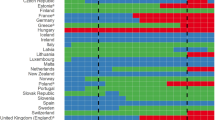Abstract.
Diagnosis-related groups (DRGs) are an instrument for classification of inpatient cases. DRGs are finding ever broader implementation internationally. Targets for using DRGs are hospital financing and budgeting, cost accounting and quality assurance. The present survey covering 18 countries shows that so far DRGs are most frequently used for budgeting purposes. In addition to DRG-based reimbursement, further quality assurance is necessary, but this is only being implemented with hesitation. The coverage planned for all inpatient cases through DRG-based reimbursement in Germany from 2003 on is a pioneering challenge internationally.
Zusammenfassung.
Diagnosis-Related Groups (DRG) sind ein Klassifizierungsinstrument für stationäre Patientenfälle, welches international immer breitere Anwendung findet. Ziel des Einsatzes sind die Unterstützung von Krankenhausfinanzierung und -budgetierung, Kostenrechnung und Qualitätssicherung, wobei der Einsatz für Budgetierungszwecke überwiegt. Die parallel zu einer pauschalierten Vergütung notwendigen Qualitätssicherungssysteme werden international nur zögernd aufgebaut. Für die Einführung in Deutschland läßt sich ableiten, daß die vorgesehene fast vollständige Abdeckung aller Patientenfälle zwar international eine Vorreiterrolle einnimmt, dies aber nicht unbedingt nachteilig für die Krankenhäuser ist.
Similar content being viewed by others
Author information
Authors and Affiliations
Rights and permissions
About this article
Cite this article
Lüngen, M., Lauterbach, K. Nutzung von Diagnosis-Related Groups (DRG) im internationalen Vergleich. Chirurg 71, 1288–1295 (2000). https://doi.org/10.1007/s001040051218
Published:
Issue Date:
DOI: https://doi.org/10.1007/s001040051218



